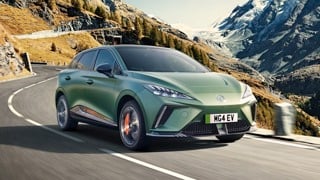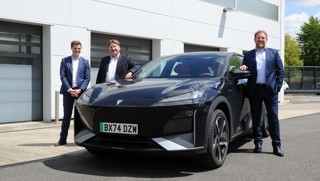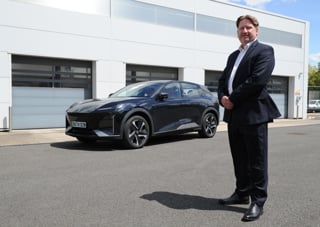The automotive “centre of gravity” has shifted to China, with unprecedented scale and speed of development driving rapid uptake of so-called ‘New Energy Vehicles’ (NEVs) – full electric and plug-in hybrids.
But while the Chinese market has whole-heartedly embraced alternative fuels, with NEVs accounting for one in two car sales, the home-grown manufacturers are eyeing the west as their next conquest market.
Speaking during the first broadcast of a new Fleet News Quarterly Market Insight with Auto Trader, Ian Plummer, commercial director at Auto Trader, the UK’s biggest automotive online marketplace, said: “They’re ahead and given the speed of development - new models in the respect of two years compared to 5-6 years in legacy brands - it feels like they're likely to stay ahead until everybody else can start developing as quickly.”
Chinese manufacturers’ global expansion aspirations could quickly find a foothold in the UK market, according to Auto Trader director of automotive finance Rachael Jones.
Referencing Auto Trader’s insight, which is based on 80 million visits to its website each month and 800,000 pricing observations per day, Jones said: “There are definitely more new brands selling new cars in the UK now. Five years ago, there were about 46 brands; now there are 57 and more than half of the new ones are only selling electric cars.”
One of the biggest challenges facing Chinese brands is market awareness.
Auto Trader data shows that just 17% of consumers have heard of BYD, for example, which launched in the UK a year ago. However, that’s 13 percentage points higher than last autumn.
Video: Fleet News editor Stephen Briers talks to Auto Trader's Ian Plummer and Rachael Jones
Nevertheless, Auto Trader data reveals a possible flaw in legacy manufacturers’ approach to electric vehicles which could level the playing field for new market entrants: their model names.
“It’s about awareness and understanding – 75% of consumers know a Golf is a Volkswagen, but only 11% know who produces an ID3,” Jones explained. “So there are challenges for established brands in terms of consumer understanding.”
UK buyers are also considering a wider range of models before making a purchase. For petrol and diesel, it is typically 12 models; for electric vehicles, it is 14.
“Look at our site: MG are getting around 3% of all new car leads and that's actually ahead of brands like Ford, Vauxhall, Mercedes-Benz,” said Jones. “So there is change happening from a brand awareness point of view.”
In the UK, fleets are driving the electric vehicle market, incentivised by low benefit-in-kind taxation which enables them to take advantage of cars that are typically more expensive that petrol and diesel. Price premiums means that any retail purchases tend to be limited to wealthier, older people who typically live in a house with a driveway and have more than one car.
The situation is very different in China: here the wealthy pay the import taxes to buy German premium brands; the mass market buys electric because of the price parity with ICE.
“The people who are buying the electric vehicles in China are the opposites of the UK,” said Plummer. “It's the affordable choice. If the car is already at price parity and obviously cheaper to charge, it makes huge sense for the mass market to go down that route.”
With Chinese brands accounting for 85% of the 9.5-million unit NEV market, it gives them huge economies of scale, assisted by the fact many of them own large swathes of the supply chain. They also have ample excess production capacity to support global exports.
“They also don’t seem to be worried about the quality of their product; when asked about warranties they usually said, well, 10 years or lifetime, which is reassuring,” Plummer added.






















Login to comment
Comments
No comments have been made yet.